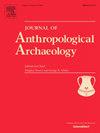Materiality of forager food insecurity in the archaeological record: A case study from the central Canadian Boreal Forest, ∼1100–1300 CE
IF 2.2
1区 社会学
Q1 ANTHROPOLOGY
引用次数: 0
Abstract
Food insecurity is a highly disruptive force at the individual and group levels, particularly when scarce resources are culturally important. Due to the close connection between food and material culture, periods of cultural food insecurity in the past may be associated with changes in the materiality (the physical and relational manifestations of the preparation, presentation, and consumption) of these foods. In the central Canadian Boreal Forest, pottery was traditionally used to cook aquatic foods as evidenced by wild rice (manoomin, Zizania spp.) microbotanical remains in carbonized food residues on cooking pots. This paper explores the connection between periods of aquatic ecosystem instability driven by climate change and the disruption of material and social traditions linked to wild rice consumption and cooperative harvesting. This connection provides an alternative explanation for sudden stylistic transformations that occurred in pottery throughout this region approximately 800 years ago.
考古记录中觅食者粮食不安全的重要性:来自加拿大中部北方森林的案例研究,约1100-1300年
在个人和群体层面,粮食不安全是一种极具破坏性的力量,特别是当稀缺资源在文化上具有重要意义时。由于食物与物质文化之间的密切联系,过去的文化粮食不安全时期可能与这些食物的物质性(准备、呈现和消费的物理和关系表现)的变化有关。在加拿大北部森林中部,陶器传统上被用来烹饪水生食物,这可以从烹饪锅上碳化食物残渣中的野生稻(manoomin, Zizania spp.)微生物残留物中得到证明。本文探讨了气候变化驱动的水生生态系统不稳定时期与野生水稻消费和合作收获相关的物质和社会传统中断之间的联系。这种联系为大约800年前该地区陶器的突然风格转变提供了另一种解释。
本文章由计算机程序翻译,如有差异,请以英文原文为准。
求助全文
约1分钟内获得全文
求助全文
来源期刊

Journal of Anthropological Archaeology
Multiple-
CiteScore
4.00
自引率
11.10%
发文量
64
期刊介绍:
An innovative, international publication, the Journal of Anthropological Archaeology is devoted to the development of theory and, in a broad sense, methodology for the systematic and rigorous understanding of the organization, operation, and evolution of human societies. The discipline served by the journal is characterized by its goals and approach, not by geographical or temporal bounds. The data utilized or treated range from the earliest archaeological evidence for the emergence of human culture to historically documented societies and the contemporary observations of the ethnographer, ethnoarchaeologist, sociologist, or geographer. These subjects appear in the journal as examples of cultural organization, operation, and evolution, not as specific historical phenomena.
 求助内容:
求助内容: 应助结果提醒方式:
应助结果提醒方式:


